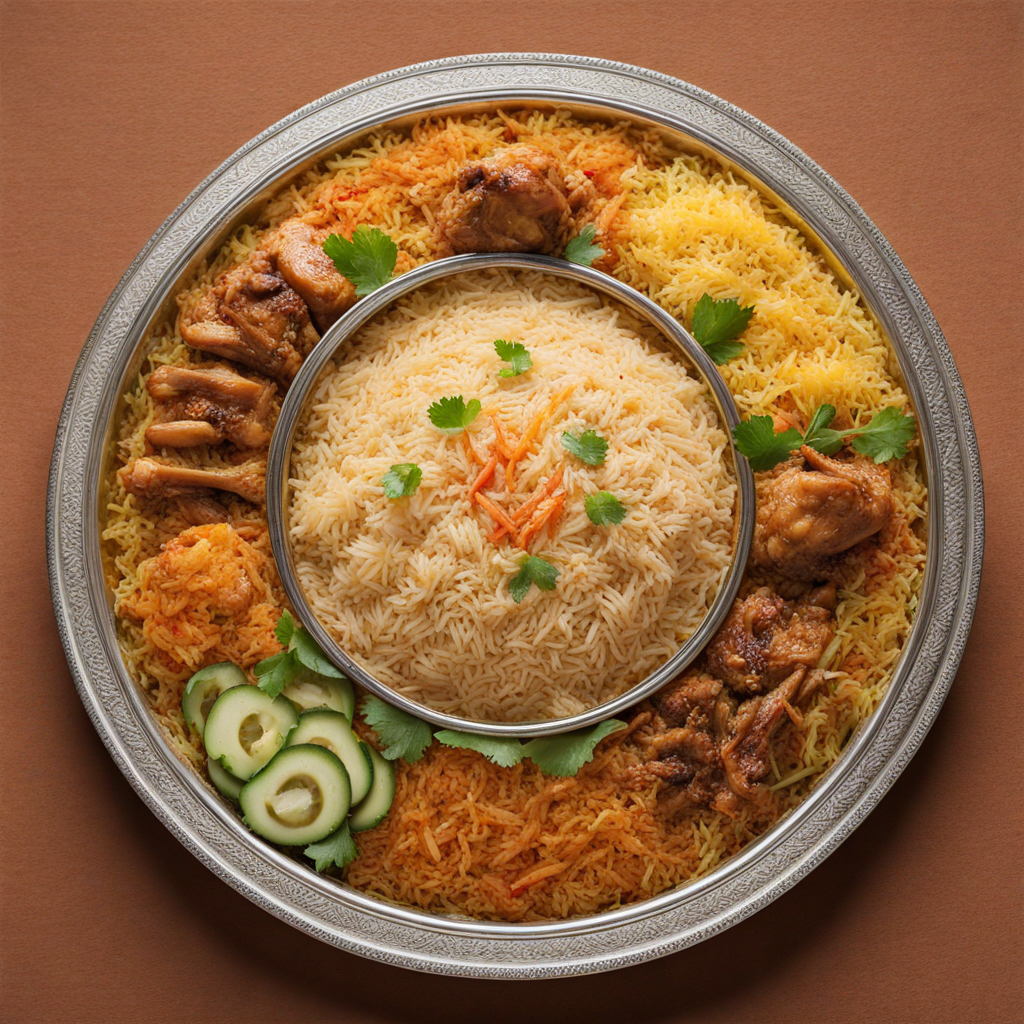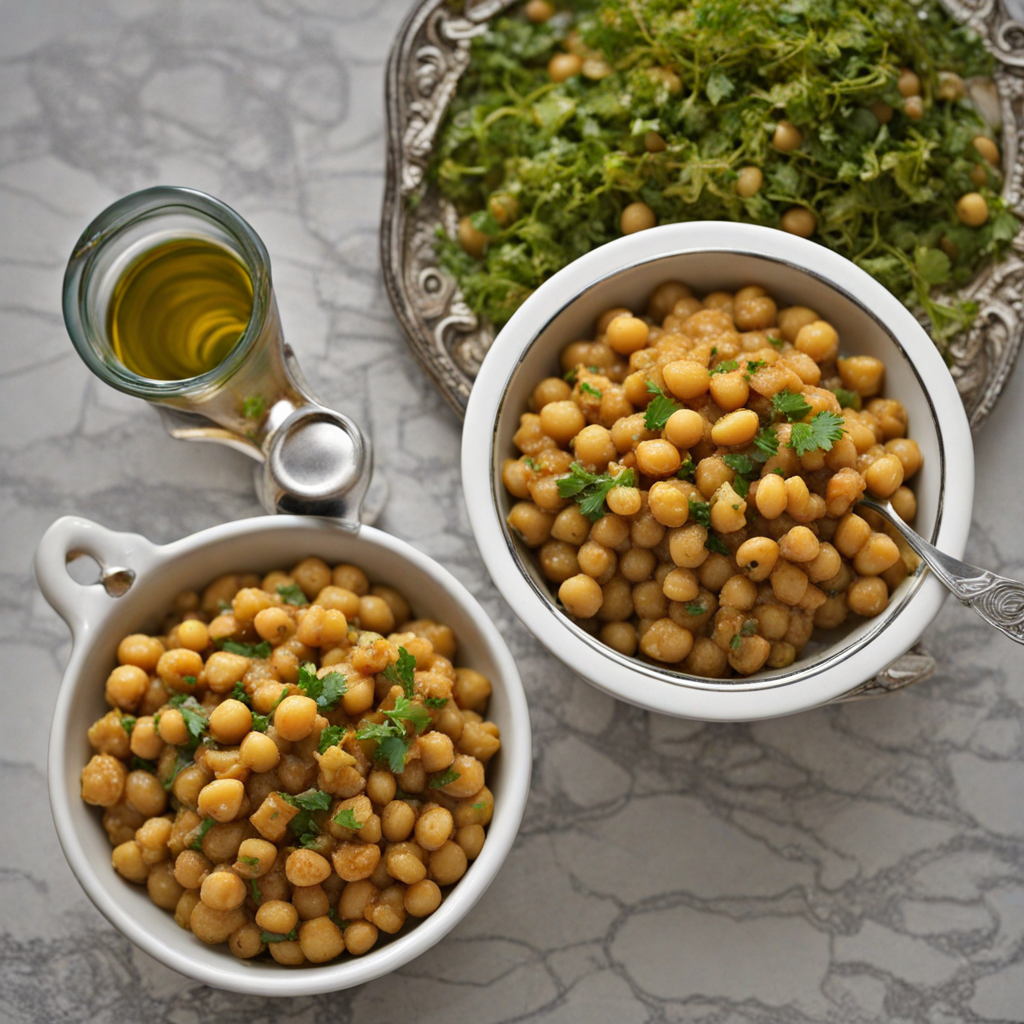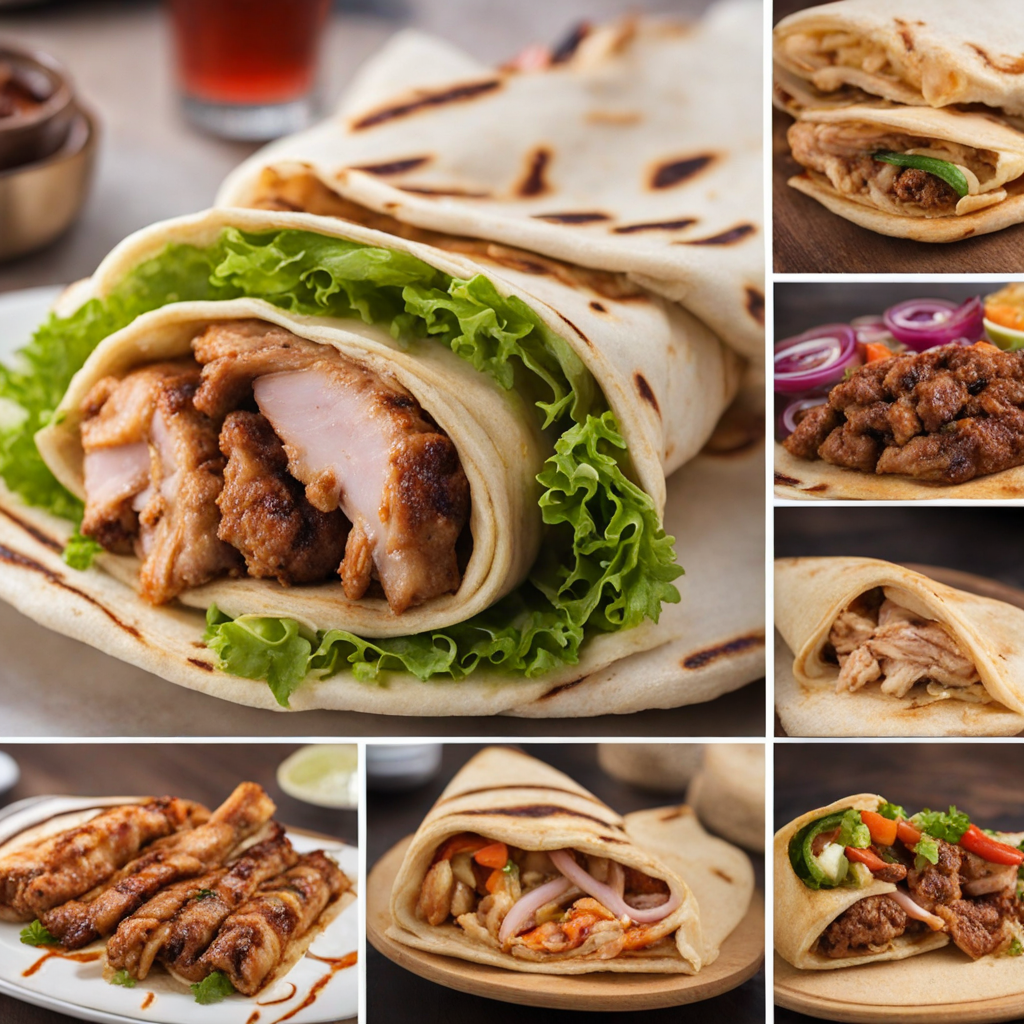Jareesh
Jareesh is a traditional dish from Saudi Arabia that showcases the country's rich culinary heritage. This hearty meal is made primarily from wheat that has been crushed into a fine grain, which gives it a unique texture. The wheat is typically cooked with meat, often chicken or lamb, and simmered together with a blend of spices that may include cardamom, cinnamon, and black pepper. The slow cooking process allows the flavors to meld beautifully, resulting in a warm and comforting dish that is perfect for family gatherings and special occasions. One of the defining characteristics of Jareesh is its creamy consistency, which is achieved by continuously stirring the mixture as it cooks. The dish is often served with a drizzle of ghee or clarified butter on top, enhancing its richness and flavor. It can also be accompanied by fried onions or toasted nuts, adding a delightful crunch that contrasts with the softness of the wheat and meat. The aroma that wafts from a pot of Jareesh is enticing, inviting you to dig in and savor each spoonful. Jareesh is not just a meal; it is a cultural experience that reflects the hospitality and warmth of Saudi Arabian traditions. Often enjoyed during Ramadan and festive occasions, it brings families together around the table. The dish is typically served in large communal bowls, encouraging sharing and connection. For anyone seeking to explore new flavors, Jareesh offers a wonderful blend of textures and tastes that is both satisfying and nourishing, making it a must-try for adventurous eaters.
How It Became This Dish
The History of جريش (Jareesh) in Saudi Arabia #### Origins Jareesh, a traditional dish deeply embedded in the culinary landscape of Saudi Arabia, is a form of cracked wheat porridge that has been enjoyed for centuries. Its origins can be traced back to the Arabian Peninsula, where the domestication of wheat began around 7000 BC. As early nomadic tribes settled, they adapted their diets to include local grains, and thus the foundations for dishes like Jareesh were laid. Historically, wheat has been a staple in the diets of many Middle Eastern cultures, and the act of cracking or grinding wheat into a coarser form allowed for diverse culinary applications. Jareesh, made from durum wheat or sometimes barley, reflects the resourcefulness of early Arabian peoples who utilized available ingredients to create nourishing and sustaining meals. #### Cultural Significance Jareesh holds a significant place in Saudi culture, often associated with communal gatherings, celebrations, and hospitality. It is not merely a dish but a symbol of togetherness and generosity. Traditionally prepared during festive occasions such as weddings, Eid celebrations, and family gatherings, Jareesh brings people together around the table, embodying the spirit of sharing and community. In Saudi Arabia, where the desert landscape presents challenges for agriculture, Jareesh's simplicity and nutritional value make it particularly important. It is rich in carbohydrates and fiber, providing sustenance for those who labor in harsh conditions. The dish has also become a part of the cultural identity of various regions within Saudi Arabia, with each locality boasting its own unique take on the recipe. The preparation of Jareesh is often a communal activity, involving family members or friends coming together to cook the dish in large pots. This practice not only reinforces social bonds but also preserves culinary traditions, as recipes and techniques are passed down through generations. The act of preparing Jareesh, therefore, becomes a ritual that connects the past with the present, highlighting the importance of food in cultural heritage. #### Development Over Time The evolution of Jareesh can be seen through its preparation methods and accompanying ingredients. Traditionally, Jareesh was made by soaking cracked wheat in water, then boiling it with meat (often chicken or lamb) and spices until it reached a creamy consistency. The dish is typically flavored with spices like cumin, coriander, and cardamom, which add depth to its flavor profile. The use of ghee or clarified butter also enhances its richness, making it a hearty meal. As trade routes expanded and cultural exchanges took place, Jareesh began to incorporate influences from neighboring regions. The introduction of new spices and condiments from North Africa and the Levant, such as cinnamon and saffron, gradually made their way into the preparation of Jareesh, creating variations that reflect the diverse culinary landscape of the Arab world. In more recent times, particularly in the 20th century, the availability of processed foods and the rise of modern cooking techniques have influenced how Jareesh is prepared. Instant Jareesh, which can be cooked in a fraction of the time, has become popular, catering to the fast-paced lifestyles of urban dwellers. Yet, despite these changes, many still prefer the traditional method, valuing the rich flavors and textures that come from slow cooking. Moreover, the dish has made its way into contemporary Saudi cuisine, often being served in restaurants and at formal gatherings. Chefs are now experimenting with Jareesh, pairing it with modern ingredients and presenting it with artistic flair, thus appealing to a younger generation while retaining its traditional essence. #### Jareesh in Modern Saudi Society In today's Saudi Arabia, Jareesh continues to thrive as a beloved comfort food. It is often featured in home-cooked meals and is a common dish in restaurants serving traditional Saudi cuisine. In a society that is rapidly modernizing, the dish serves as a reminder of the rich cultural heritage that persists despite the influx of global culinary trends. As a testament to its enduring legacy, Jareesh is also recognized during national celebrations, such as Saudi National Day, where it represents the pride in local traditions and the importance of maintaining cultural practices. The dish is often showcased in festivals, where chefs compete to create the best versions, further solidifying its status as a cherished element of Saudi culinary identity. Additionally, the health benefits of Jareesh have garnered attention in recent years, with a growing interest in traditional foods that are both nutritious and flavorful. As more people seek to reconnect with their roots and embrace wholesome eating, Jareesh’s reputation as a nourishing dish is being revitalized. #### Conclusion Jareesh is more than just a dish; it is a cultural artifact that encapsulates the history, traditions, and communal values of Saudi Arabia. From its ancient origins to its modern interpretations, Jareesh has evolved while maintaining its significance in Saudi society. As it continues to be a staple in households and a highlight in celebrations, Jareesh represents the resilience of culinary traditions in the face of change. In a world where culinary practices are in constant flux, Jareesh stands as a reminder of the importance of food in shaping cultural identity and fostering connections among people. Its rich history and evolving nature make it a fascinating subject of study for food historians and a beloved dish for generations to come. Through Jareesh, we can appreciate not only the flavors of Saudi Arabia but also the stories and traditions that continue to nourish its people.
You may like
Discover local flavors from Saudi Arabia







